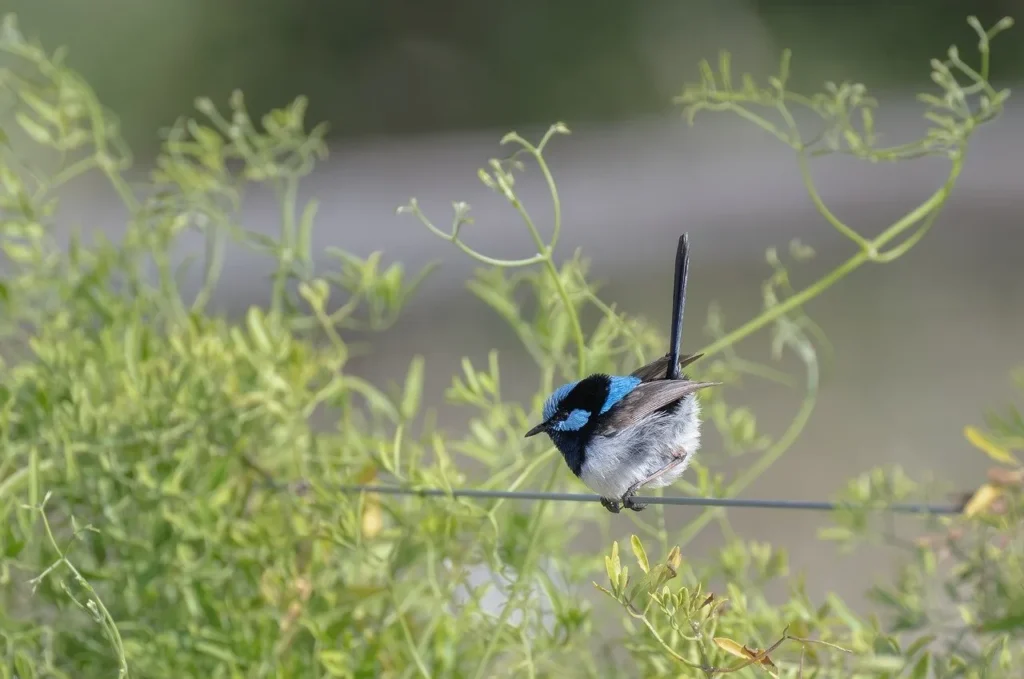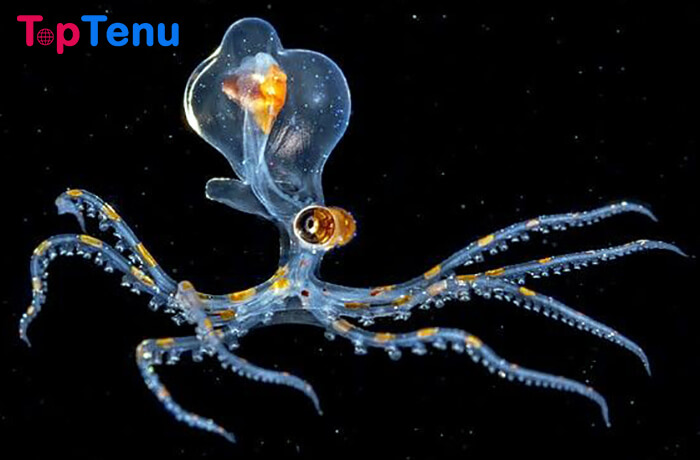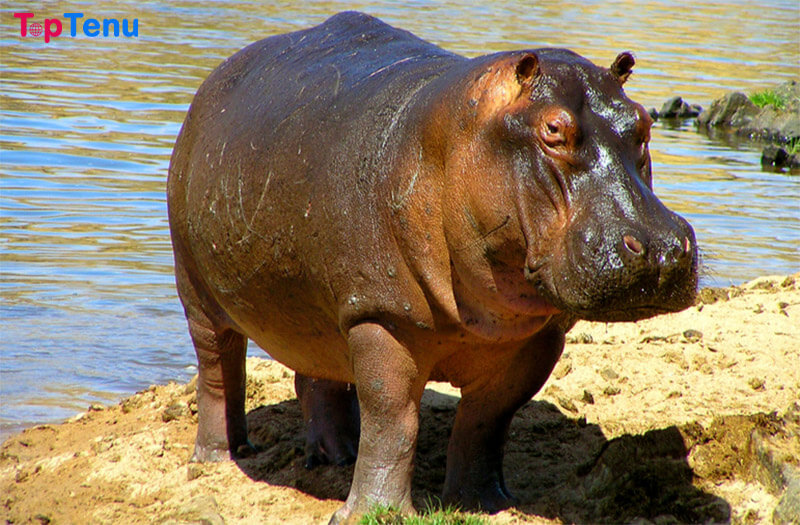Hello, friends, Today, we are going to explore the amazing world of birds. Some of these winged creatures have strange characteristics that make them truly unique.
With their long beaks and great looks, they often surprise us. Interestingly, not everyone thinks of them as birds. But let me tell you, they are real!
Biologists have been amazed to discover these extraordinary creatures right here on Earth. So join us as we dive into the realm of the world’s strangest-looking birds. These are products of nature’s creation that God may have bypassed censorship. Begin! In this list, we start with the Lophorina Superba.
13. Lophorina Superba

Lophorina Superba is a remarkable bird with an impressive ability to captivate from a distance, almost as if it hails from a distant server outside our solar system.
With its deep black color, akin to a pot of ink, Lophorina Superba belongs to the bird-of-paradise family and is found in the rainforests of New Guinea and Indonesia.
This bird’s body is covered in black feathers as dark as the night, complemented by a unique plumage that glows on its chest like a fluorescent gem.
When the male displays its feathers to nearby females, it forms a sharp-headed, curved shape resembling a sickle.
The male performs various complex and quirky dances, showcasing the most advanced courtship behavior among birds.
Researchers have discovered these fascinating traits through the use of electron microscopy and other close-range imaging methods. They found that the super black feathers of this bird have an abnormal microstructure.
The ultrafine elements of the feather are flat and overlapping, with a complex branching structure similar to coral or dense foliage.
This unique structure acts as tiny light traps, scattering light rays in different directions and absorbing them almost entirely, preventing reflection. As a result, what we see is a deep black color.
Optical measurements conducted by researchers have revealed that these feathers absorb up to 99.95% of the incident light, comparable to the blackest material created by humans, such as Vantablack, which absorbs 99.96% of light.
When viewed from certain angles, many people might mistake it for a headless and bizarre creature rather than a bird.
12. King Vulture
The King Vulture, with a slightly less impressive appearance, is quite plain and has a difficult temperament. This species of bird belongs to the vulture family and is found mainly in tropical regions from southern Mexico to Argentina.
The King Vulture has a significant presence in the religious and cultural records of the Mayan people. According to legend, this bird is a messenger of the gods, carrying their messages to humans.
Perhaps it is because of their oversized size that they are called “king” vultures, as their appearance is not much different from a rhinoceros horn in the center of their face.
They also have a nature that likes to have their food served to them, in keeping with their name, which implies royalty.
King Vultures are extremely lazy when it comes to hunting for food. They typically wait for their prey to be served directly to their mouths.
They often hover lazily in the air looking for carrion instead of going out to hunt. At this point, the King Vulture begins to resemble a meticulous janitor who specializes in eating garbage rather than a king who indulges in gourmet cuisine on a daily basis.
11. Shoebill

The Shoebill (Balaenicipitidae), with its extraordinary and mutant-like face, can make even the most prestigious beauty salons in Africa bow in defeat. The sound of its call can send shivers down the spine of many a faint-hearted individual.
The Shoebill belongs to a family of birds whose scientific name, Balaenicipitidae, means “twisted mouth syndrome.” These birds typically inhabit tropical regions in large swamps throughout eastern Africa.
They are primarily gray in color when immature, but their feathers turn brown as they mature. Interestingly, this species tends to be monogamous, preferring to have only one mate and raise only one offspring.
In addition, the worsening effects of natural climate change and threats from other aggressive predator species have significantly reduced the number of Shoebills worldwide.
At first glance, the Shoebill’s fierce and combative expression indicates that it is a member of the gangster society. When they call, it’s like a ’90s engine revving up.
With their large beak and rock-hard bill, their prey often includes reptiles, seafood, and even baby crocodiles.
This beak is yellowish with black spots, and the tip of the beak resembles a hook, ready to collide with any object that irritates them.
Getting up close to the bizarre open mouth of a Shoebill would undoubtedly give many of us goosebumps. But it’s not all ferocity; the Shoebill is also incredibly intelligent.
They can bow their heads in gratitude when offered food or nod in recognition when someone first greets them. All in all, the Shoebill is a strange creature of nature, grotesque in appearance, yet with an elegance all its own.
Here is a collection of birds with the most remarkable heads on Earth, starting with…
10. Cephalopterus Penduliger
The Cephalopterus Penduliger bird is one of the most unique birds, characterized by an unusual feature on its neck. It can be called a bow tie or a bib, but let’s temporarily refer to it as a yoke.
This bird can be found in western Colombia and Ecuador, residing in humid mountainous areas and lush cloud forests. Its primary diet consists of fruits.
The males are distinguished by a large yoke with feathers on the throat, while the females and juveniles usually lack it or have a much smaller yoke.
A special characteristic of this species is its head, which is difficult to miss. The feathers on its head stand up and tilt forward, giving it a fierce and warrior-like appearance.
We can’t ignore the eye-catching headgear of the Peruvian Rupicola bird. Rupicola is a bird species belonging to the Cotingidae family and originates from South America.
They are typically found in tropical rainforests and subtropical forests. The male Rupicola birds boast bright orange plumage and a prominent fan-shaped crest to attract females.
The diet of Rupicola birds mainly consists of fruits, but they sometimes include small snakes and lizards in their meals.
Furthermore, it’s highly possible that ancient Roman warriors, during their campaigns, drew inspiration from this impressive display and incorporated it into their helmet design.
This tactic aimed to enhance their adrenaline flow, allowing for increased combat performance.
In addition to the handsome birds mentioned earlier, the Gloster canary also boasts a fierce-looking head.
For those who are interested in getting the contact information of this young man, they can be found in the Canary Islands, an autonomous community of Spain, and the Azores, an autonomous community of Portugal.
The Gloster canary belongs to the finch family and is also known as the crested canary. These canaries are the result of decades of breeding. They were first discovered and exhibited at the Cryptopales exhibition in 1900-1905.
Thanks to their comical appearance, these birds have suddenly become social media stars. The heads of each individual canary are usually unique.
Some have thick hair, while others have sparse hair. Some look very elegant, while others have a more tousled appearance.
9. Greater Sage-Grouse
The Greater Sage-Grouse has an unmistakable and unique appearance, known for its elaborate mating dance and distinctive physical features. Its classification puzzled scientists until 1970 when it was finally placed in the grouse family.
Greater Sage-Grouse forage primarily on the ground, eating bitterbrush, but they also eat fruit and other insects. This species has caused quite a stir among scientists and the general public alike.
It’s understandable that the average person might not even recognize it as a bird, mistaking it for an alien creature.
With a fan-shaped tail that splits into sharp, pointed sections and two unusually round formations on its chest, it leaves people perplexed.
When courting females, the Greater Sage-Grouse emits a sound consisting of two distinct notes from these round formations and uses an incredibly complex courtship display during the mating season.
8. Helmeted Hornbill
Poor Helmeted Hornbill, burdened with a heavy “helmet” all his life. The Helmeted Hornbill is a peculiar bird species with an oversized casque on its head that resembles a steel helmet.
It is typically found in the rainforests of Southeast Asia. The Helmeted Hornbill’s diet consists of fruits and seeds, and it plays an important role in seed dispersal, earning it the title of “farmer of the forest.
” The bird is adorned with a combination of white and black feathers and has bare, exposed skin around its throat.
The hornbill’s distinctive horn-like casque is highly sought after and is valued at three to five times that of elephant ivory. Unfortunately, illegal trade poses a significant threat to its survival and is pushing it towards extinction.
The Helmeted Hornbill has a solid casque made of keratin, a fibrous protein. This casque extends from the top of the beak to the skull, resembling an iron helmet used in war.
It accounts for about 10% of the bird’s body weight and, when combined with its wrinkled neck, gives the bird a remarkably bizarre and distorted appearance.
7. Rhinoceros Hornbill
The Rhinoceros Hornbill boasts a tightly curved horn on its head, symbolizing enduring love life. Belonging to the same family as the Helmeted Hornbill, it is primarily found in the rainforests and subtropical forests of Indonesia, Malaysia, Singapore, and Thailand.
It is a relatively large bird with predominantly black plumage. Interestingly, it is one of the few bird species to have “eyelashes” or distinctive markings around the eyes.
Rhinoceros Hornbills are omnivorous, feeding on fruits, insects, and even small animals. A distinctive feature of this species is the tightly curved horn-like structure that protrudes from the front of the face, resembling a rhinoceros horn, but in an orange color.
This uncomfortable horn structure is composed of elongated horn-like material that extends along the beak to the skull.
Unfortunately, the Rhinoceros Hornbill faces a difficult fate, as once they develop the horn-like growth, it becomes challenging to escape the sights of hunters.
The horns of the rhinoceros hornbill are sometimes called “elephant ivory” because they are a beautiful material for carving. With their smooth and golden surface, they can be carved into exquisite and valuable pieces of jewelry.
6. Potoo
Joining the ranks of the world’s strangest characters is the Potoo, a bird that emerges from the depths of darkness like a haunting nightmare.
The Potoo is a bird with a cute yet terrifying appearance, especially with its haunting eyes. Its large, black eyes surrounded by a golden ring create a terrifying effect at first glance.
These eyes help them hunt at night. Potoos are found primarily in the moist, dense forests of Central and South America. The presence of the Potoo always attracts the attention of the public.
They have a relatively large head compared to their body, and when they open their beak wide, it adds to their sinister appearance.
In addition to their striking black and gold eyes, Potoos are also known for their mastery of camouflage.
Their gray-brown plumage makes them look like harmless twigs, effectively disguising them in their environment. During the day, they remain motionless, making it incredibly difficult for other species to detect them.
This solitary behavior often leads to a sense of isolation for the Potoos. In local folklore, they are called “spirit birds” and are believed to be mythical creatures sent down from the sky.
Contrary beliefs, however, suggest that with their appearance, they must have come from the depths of hell.
5. Black Skimmer
The Black Skimmer, with its remarkable beak resembling a pair of chopsticks, is also part of the extraordinary team. Primarily found in North and South America, the Black Skimmer displays its distinctive black and white plumage.
As the name suggests, their prominent beaks are perfectly designed for efficient fish-catching. It’s worth noting, however, that these beaks are slightly uneven, with the lower beak being longer than the upper.
This unique feature may cause discomfort to individuals with obsessive-compulsive disorder (OCD) as they observe the Black Skimmer.
However, this feature actually helps them catch fish in a truly unique way. They fly quickly over the surface of the water, skimming it with their protruding beaks and unexpectedly grabbing hapless prey.
But that’s not all. In order to maximize their hunting success, Black Skimmers often gather other members of their family to form large flocks that embark on an extensive hunt along rivers and coastal areas. In perfect harmony with the saying “your face
4. Roseate Spoonbill
The Roseate Spoonbill, scientifically known as Platalea ajaja, is a bird belonging to the Spoonbill family. They breed and live in South America, primarily along the eastern Andes, coastal regions of Central America, the Caribbean, Mexico, and the Gulf of Mexico.
Adult individuals have a slightly greenish head during the breeding season, while the majority have white heads under normal circumstances.
The plumage of the Roseate Spoonbill is very attractive to many, as it is a beautiful blend of pink, reminiscent of lotus petals, with a hint of milky white.
Life has given the Roseate Spoonbill elegance, yet it has generously left an enormous spoon-like bill on its face, giving it remarkable resilience to live with that spoon-like bill all its life.
3. Nightjar
The Standard-winged Nightjar is a bird species with a peculiar feather structure. This unique bird is found from Senegal to Ethiopia in Africa and belongs to the family Caprimulgidae, commonly known as nightjars.
They have a bizarre appearance with two incredibly long feathers on each wing. Due to their small size, they feed primarily on small insects.
Because of their conspicuous appearance, they rely on twilight activities to survive in the harsh animal kingdom. To date, scientists have not fully explained the function of these extra-long feathers.
However, it appears that they serve a decorative purpose, making them look incredibly tangled.
If another species attacks and manages to grab these feathers, it’s as good as surrender. The length of these feathers on many individuals can be twice the length of their body, which makes you want to cut them off to relieve the itching in your eyes.
Next on the list is the Jacobin Pigeon, known for its high fashion sense. Domesticated in Asia,
2. Jacobin
Jacobin pigeons are among the oldest domesticated pigeon breeds globally. They trace their ancestry back to the rock pigeon, believed to have originated in India or Cyprus.
Their presence in Europe dates back to the 16th century, undergoing four evolutionary stages through expert breeding efforts. A distinguishing characteristic of the Jacobin is the mane-like feathers around its neck, reminiscent of a lion’s mane.
Their fashion sense is evident in the feathered neck ruff, lending them a luxurious appearance. What sets the Jacobin apart is its wide array of colors, ranging from yellow, brown, white, black to multicolored plumage.
1. Major Mitchell’s Cockatoo
Another unique avian name on our list is Major Mitchell’s Cockatoo, recognized for its regal headdress akin to that of a native chief.
Major Mitchell’s Cockatoos are easily domesticated and exceptionally affectionate parrots. Renowned for their loyalty, they can rival dogs in devotion.
Sporting beautiful light pink plumage, they exhibit intelligence and a high level of sociability. Native to inland Australia, these parrots often nest in areas with sparse tree cover and close to water sources.
Their most striking feature is the crest on their head, which can display a variety of colors. When raised, it resembles the vibrant headdress worn by an Aboriginal chief, serving to court potential mates by showcasing their charm and allure.


